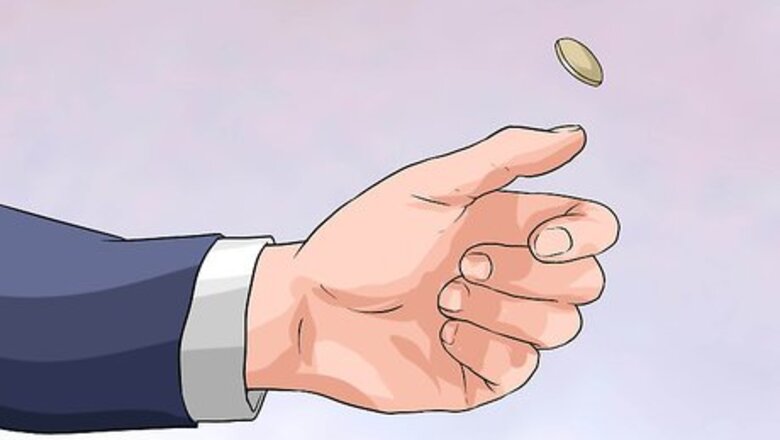
views
Establishing the Basics

Decide who serves first. In ping pong/table tennis, you should first decide who's going to serve the ball. The person who serves the ball is the person who first hits the ball to start up a game. You can flip a coin or play a game like rock, paper, scissors to decide who serves. Whoever serves gets to choose which side of the table they want to play on.
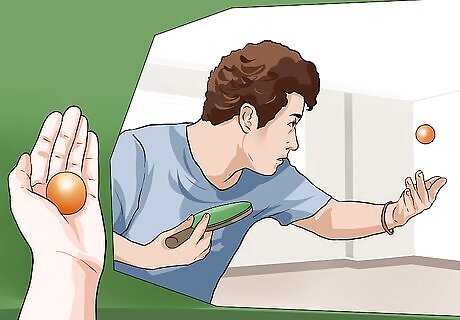
Learn the rules for serving. If you're chosen to serve, you will have to do so. There are some specific rules for how to serve a ball that you will need to follow in table tennis. For starters, hold the ball in the palm of your hand with your hand opened flat. Keep this hand level with the table. You should toss the ball upward and hit it when it's hovering above the table. You need to hit the ball so it bounces once in your court and then once again in your opponent's court. You can replay a serve under certain conditions only. You can replay a serve if the ball hits the net before your opponent's court, if your opponent hits the ball before it touches the court on his end, or if your opponent was not ready when you served the ball.
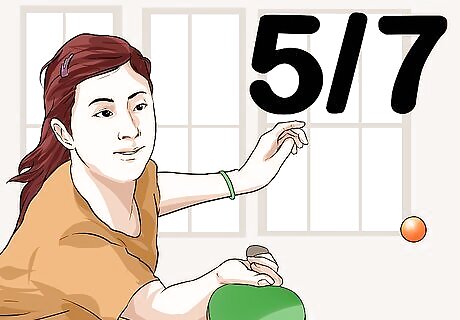
Determine the number of rounds you'll play. In ping pong, you always play an odd number of rounds. The winner is the person who wins the majority of rounds. For example, if you're playing 7 rounds, the winner would need to win at least 5 of those rounds to win the game.
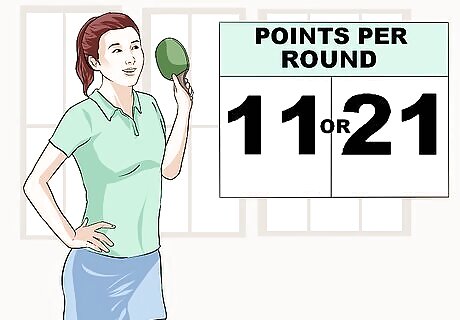
Decide if you're playing to 11 or 21 points in each round. In each round, you'll play until one player reaches a certain number of points. Most games are played to 11 points, but you can also play to 21. If you want a longer game, 21 may be a better option. Whoever gains 11 or 21 points first, with at least a 2 point lead, wins the round. For example, a score of 9 to 11 would win an 11-point round, but a score of 10 to 11 would not. In the event a round becomes tied at 10 to 10 or 20 to 20, you will have to play into overtime. In overtime, continue playing until one player gains a lead of 2 points. Whoever gains the 2 point lead first would win.

Figure out how to tell if a ball is in or out. An important thing to understand if you want to score table tennis is whether a ball is in or out. Often, a point is awarded based on whether a player hits a ball in or out of the field. If a ball touches the surface of a table, it's in. If a ball touches the side of the table, or falls off the table, it's out.
Tracking Scores
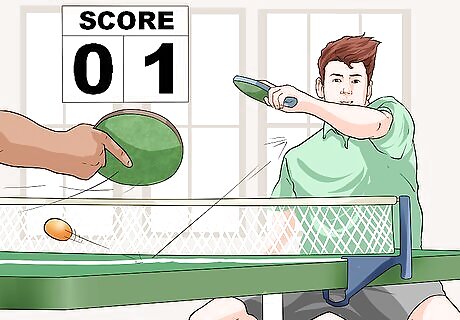
Record when you win a point. As you begin playing ping pong, record when each player scores a point. Essentially, you score a point by keeping the ball in play longer than your opponent. If your opponent fails to hit a ping pong ball that you served or hit last, you get one point for the game. Remember, in ping pong you have to hit your ball so it bounces off your end of the table, and then off your opponent's end of the table. If your opponent misses the ball, but the ball does not bounce on his or her side of the table, you do not get a point.
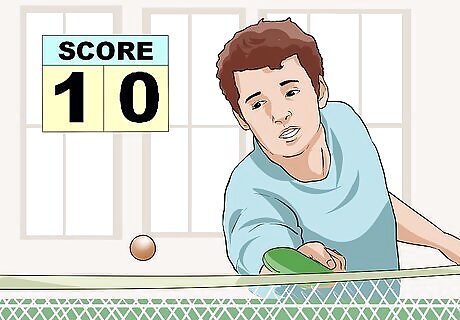
Record when you lose a point. You can also lose points in ping pong. Make sure to record when you lose a point. Under the following conditions, you would subtract one point from your total score. If you miss the ball, you'll lose a point. If you hit the ball into the net and it falls back onto your side of the table, you'll lose a point. If you hit the ball too hard, and it falls off the table, you lose a point. You cannot hit the ball before it bounces off of your side of the table. If you do so, you'll lose a point. If your ball bounces twice on your side of the table, you'll lose a point. If you accidentally move the table during play, you'll lose a point.
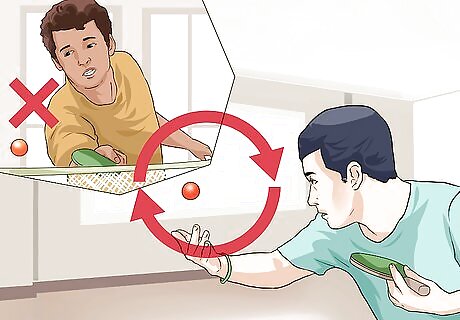
Switch up who serves. Each time you or your opponent misses the ball, you will have to serve the ball again. In ping pong, service changes every two points. For example, you serve the ball to begin a game. You score one point, after your opponent fails to hit the ball. It would be your responsibility to serve again. Then, your opponent scores a point on you. Once again, you serve the ball. You have reached two total points in the game, one for you and one for your opponent. The next time a point is scored, it's your opponent's turn to serve. He or she will keep serving until another two points are scored. Then, it's your turn again.
Winning the Game
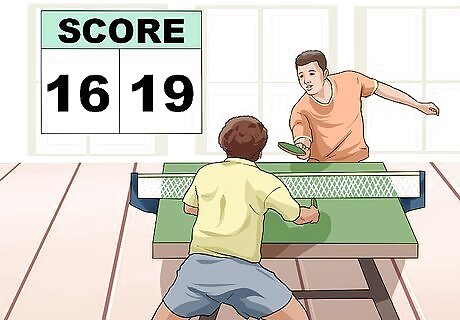
Keep playing until one player hits 11 or 21 points with a 2 point lead. Continue to play the game, keeping track of scores. The round will continue until one player has at least 11 or 21 points, depending on the rules you set. You need at least a 2 point lead in order to win a round, so a score of 10 to 11 or 20 to 21 will not result in you winning.
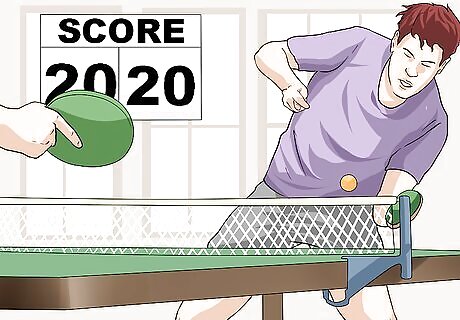
Settle a close game. Remember, in the event of 10 to 10 or 20 to 20 tie, the round goes into overtime. Continue to play until one player gains at least a two point lead. For example, a score of 10 to 12 could settle a tie in an overtime round.
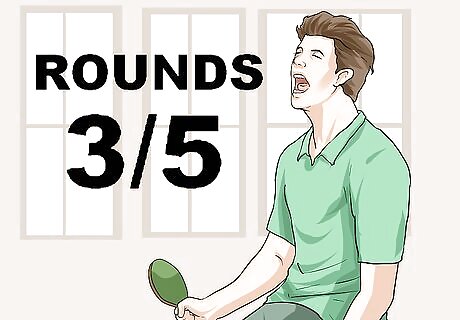
Play an odd number of rounds. You play for an odd number of rounds in ping pong. The player who wins the most rounds wins the game. For example, say you're playing for 5 rounds. The winning player must win at least 3 out of 5 of the rounds.




















Comments
0 comment